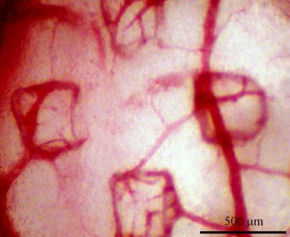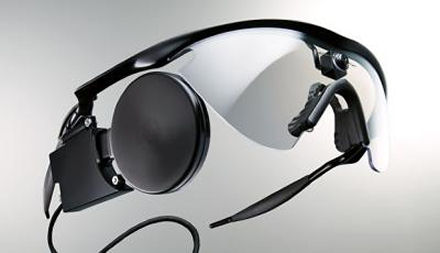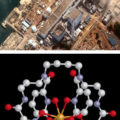
Describing their work in the journal Advanced Materials, researchers say they have developed a bandage that actively stimulates and directs blood vessel growth in a coordinated pattern on the surface of a wound.
Called a “microvascular stamp,” the bandage contains living cells that deliver growth factors to damaged tissues in a defined pattern. After a week, the pattern of the stamp “is written in blood vessels,” the researchers report.
“Any kind of tissue you want to rebuild, including bone, muscle or skin, is highly vascularized,” said University of Illinois researcher Hyunjoon Kong. “But one of the big challenges in recreating vascular networks is how we can control the growth and spacing of new blood vessels. The ability to pattern functional blood vessels at this scale in living tissue has not been demonstrated before.”
While other researchers have previously embedded growth factors in materials applied to wounds in an effort to direct blood vessel growth, the new approach is the first to incorporate live cells in the bandage. “These cells release growth factors in a more sustained, targeted manner than other methods,” Kong explained.
The bandage material is built of layers of a hydrogel (made of polyethylene glycol) and methacrylic alginate (an edible, Jell-O-like material). It allows small molecules to leak through, and contains channels of various sizes to direct the flow of larger molecules, such as growth factors.
Co-researcher Rashid Bashir sees many potential applications for the new bandage, from directing the growth of blood vessels around a blocked artery, to increasing the vascularization of tissues with poor blood flow. “Enhancing the growth of new blood vessels in a coordinated pattern after surgery may also reduce recovery time and lessen the amount of scar tissue,” he concluded.
Related:
Discuss this article in our forum
Blood Could Be Integral Part Of Brain’s Processing Power
Bloodsucking Medical Marvels
“Plasma pharmacology” wipes-out MSRA, helps wounds heal








Comments are closed.